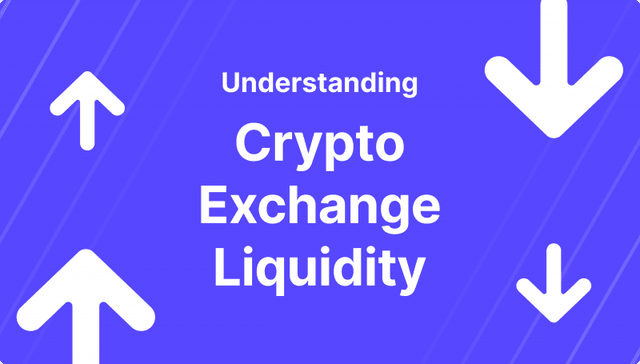CFD Liquidity Providers: A Complete Guide for Brokers

Launching a CFD trading platform without access to deep, reliable liquidity is like running an exchange with no buyers or sellers. Liquidity is the infrastructure. It defines your spreads, your execution speed, your ability to scale, and ultimately, your profitability.
In 2025, when crypto-CFDs are rising in demand and clients are expecting institutional-grade execution, choosing the right liquidity provider is a strategic decision that can make or break your brokerage.
This guide breaks down how CFD liquidity works, what to expect from a top-tier provider, and how to choose the right partner to build a scalable, multi-asset brokerage.
Key Takeaways
- CFD liquidity providers enable brokers to offer multi-asset trading without direct market exposure or asset ownership.
- Great LPs offer regulatory transparency, strong execution, platform compatibility, and multi-asset coverage.
- CFD liquidity is synthetic and OTC, making trade routing, margin settings, and risk control fully customisable.
- B2BROKER delivers deep, institutional-grade CFD liquidity across 10+ asset classes via a single margin account.
What is a CFD Liquidity Provider?
A CFD liquidity provider (LP) is a company that supplies brokers with pricing and trade execution across a wide range of contract-for-difference (CFD) instruments (stocks, indices, commodities, crypto, and FX) without requiring physical ownership of the asset.
Unlike traditional prime brokers or liquidity aggregators that simply connect you to existing markets, CFD LPs often create the synthetic markets themselves. They operate in an OTC (over-the-counter) environment, meaning pricing, volume, and execution conditions are determined directly between broker and provider, not on a public exchange.

The LP’s role is to ensure tight spreads, consistent execution, and deep market access, even during volatile conditions. Most provide connectivity via FIX API, liquidity bridges, or platform-specific plugins (MT*4, MT*5, cTrader).
Ultimately, your CFD LP is a critical infrastructure partner that enables your brokerage to offer multi-asset trading at scale, with the flexibility and performance your clients expect.
How CFD Liquidity Works Behind the Scenes
To deliver smooth execution for your clients, your CFD liquidity provider runs a tightly integrated backend system built around price aggregation, order routing, and real-time risk control.
Aggregation and Spread Formation
CFD LPs typically aggregate pricing from a wide network of venues — including prime brokers, exchanges (in the case of crypto CFDs), and proprietary desks. They use this data to calculate the best bid and ask quotes across each CFD instrument.
Instead of passing on raw quotes, they usually construct synthetic spreads by adjusting for volatility, instrument type, trading hours, and broker-specific markups. For example, a tight EUR/USD CFD quote might be derived from multiple Tier-1 FX banks, while a crypto index CFD could blend spot prices from major CEXs.
Platform Display and Trade Routing
Once pricing is calculated, the LP streams the liquidity to your platform via a bridge or FIX API connection. The data appears in your frontend in real time, ready for execution.
When a client opens a position, the broker chooses whether to internalise the order (B-Book) or pass it to the LP (A-Book). A strong CFD LP helps you maintain control over risk while still offering competitive execution to clients.
Risk Management on the LP Side
CFD LPs monitor flow at scale. They hedge net exposure across instruments dynamically, often using real market positions, synthetic baskets, or internal netting logic. When flow becomes imbalanced or “toxic,” spreads can adjust to reflect risk — protecting both the LP and the broker from excessive slippage.
Take Control of Your Liquidity Routing
Explore how our B2CONNECT liquidity hub helps brokers manage A-Book, B-Book, or hybrid (C-Book) execution with precision and transparency.
Types of CFD Instruments LPs Typically Support
CFD liquidity providers typically cover a broad universe of asset classes, allowing brokers to offer clients global exposure without the need for direct ownership or exchange access.
Major Asset Classes
Most CFD LPs support:
- Forex (FX) — Still the most popular CFD class, covering majors, minors, and exotics.
- Indices — S&P 500, DAX, NASDAQ, FTSE, and Nikkei, ideal for macro exposure.
- Commodities — Including energy (Brent, WTI, Natural Gas), softs (coffee, cocoa), and metals (gold, silver, platinum).
- Single Stock CFDs — Apple, Tesla, Amazon, and hundreds more, sourced from equity venues.
- ETFs — Contract versions of popular exchange-traded funds (SPY, QQQ, etc.).
- Crypto CFDs — BTC, ETH, altcoins, and baskets, with liquidity aggregated from CEXs and OTC desks.
These instruments are quoted and filled by the LP without exchange clearing, making them ideal for OTC execution environments.
Spot vs CFD Liquidity
In spot markets (like crypto spot or FX), liquidity is tied to the underlying order books. In contrast, CFD liquidity is synthetic — the LP creates a price feed and fills contracts bilaterally. This allows for tighter spreads, better control over exposure, and round-the-clock execution, even outside traditional market hours.
What Makes a Great CFD Liquidity Provider?
Choosing a CFD liquidity provider means building a reliable, compliant, and scalable foundation for your brokerage.
1. Regulatory Transparency
A trustworthy CFD LP should operate under a clear regulatory framework. Whether they’re licensed in the EU, UK, or other Tier-1 jurisdictions, a transparent legal structure signals credibility and ensures better banking, PSP, and audit readiness for your brokerage.
2. Breadth of Instruments
More instruments = more revenue opportunities. Look for LPs offering multi-asset CFD coverage, including FX, indices, commodities, single stocks, ETFs, and crypto. Having everything under one roof saves on integrations and simplifies portfolio expansion.
3. Platform Compatibility
Your LP should natively integrate with MT*4, MT*5, cTrader, and platforms like B2TRADER. Look for FIX protocol support, API documentation, and a proven bridge setup to reduce time-to-market and prevent connectivity issues.
4. Execution Quality
Speed matters. The best LPs operate low-latency infrastructure with co-located servers in financial hubs (LD4, NY4, TY3, etc.). This reduces slippage and supports high-frequency, low-latency strategies.
5. Custom Risk Settings
Advanced LPs allow brokers to customise margin requirements, stop-out levels, leverage tiers, and symbol-specific limits. This flexibility is key to managing different client segments or complying with local regulations.
6. Market Depth and True Volume
Level 2 pricing and full market depth aren’t just for show. They let traders make better decisions and give brokers transparency into how orders are filled—especially important for large-ticket execution or VIP desks.
7. SLA and Support
Your LP is part of your infrastructure. Look for a partner offering 24/7 support, fast response times, and clear SLAs on uptime and incident resolution.
8. Execution Models
Can they support A-Book, B-Book, or hybrid execution models? Your risk profile may evolve over time. Choose a provider that supports flexible routing and order management logic.
9. Cost Structure
Understand what you’re paying for. Some LPs offer all-inclusive pricing (spread + markup), others charge volume-based commissions. Transparent fee schedules, low minimums, and no hidden integration costs are signs of a broker-first LP.
Want to See How B2BROKER’s CFD Liquidity Works?
Book a walk-through and see how our CFD liquidity connects to your trading platform in real time.
How B2BROKER Solves This with Deep, Multi-Asset CFD Liquidity
Most liquidity providers offer only partial coverage—maybe a few FX pairs, some index CFDs, and patchy support for other asset classes. B2BROKER takes a fundamentally different approach: we deliver deep institutional-grade liquidity across 10 full asset classes from a single margin account.
This includes:
- Forex
- Crypto CFDs
- Metals
- Indices
- Energy (Oil, Gas)
- Commodities (Agri, Softs)
- Equities (Single stocks)
- ETFs
- NDFs
- Fixed Income
Deep, Reliable Liquidity Across 10 Major Asset Classes
FX, Crypto, Commodities, Indices & More from One Single Margin Account
Tight Spreads and Ultra-Low Latency Execution
Seamless API Integration with Your Trading Platform

Unified Access, Zero Fragmentation
With B2BROKER, you get one connection that gives your brokerage aggregated liquidity from Tier-1 banks, non-bank market makers, and top crypto venues, all streamed into your platform via FIX, OneZero, PrimeXM, cTrader, or B2TRADER.
Our CFD liquidity is multi-platform and multi-currency by design. The crypto CFD solution supports 130+ trading pairs and collateral options—USD, EUR, BTC, ETH, and many more. You get seamless margin management and 24/7 access to crypto and traditional markets under one roof.
Designed for Performance, Built for Control
Our infrastructure is deployed in global data centres, ensuring ultra-low latency and fast execution. The STP model ensures no conflict of interest. You choose how trades are routed (via A-Book, full internalisation (B-Book), or hybrid C-Book) using our B2CONNECT liquidity hub.
From real-time reporting and margin alerts to custom symbol streams, depth settings, and role-based access, brokers get the tools to monitor, hedge, and grow, without building from scratch.
B2BROKER powers 500+ institutions globally with liquidity that is fast, deep, and customisable. Whether you're running a CFD platform, crypto exchange, or multi-asset brokerage, we help you scale faster and serve more clients with confidence.
Choose the Right LP, Scale with the Right Partner
Liquidity is the backbone of your entire brokerage operation. The right provider gives you more than market depth and execution speed. It gives you confidence, control, and a foundation to scale globally.
With B2BROKER, you get the full ecosystem: trading platforms, CRM, risk management tools, reporting, and more, all tightly integrated and ready to go.
Have a Question About Your Brokerage Setup?
Our team is here to guide you — whether you're starting out or expanding.
Recommended articles
Our team will present the solution, demonstrate demo-cases, and provide a commercial offer





